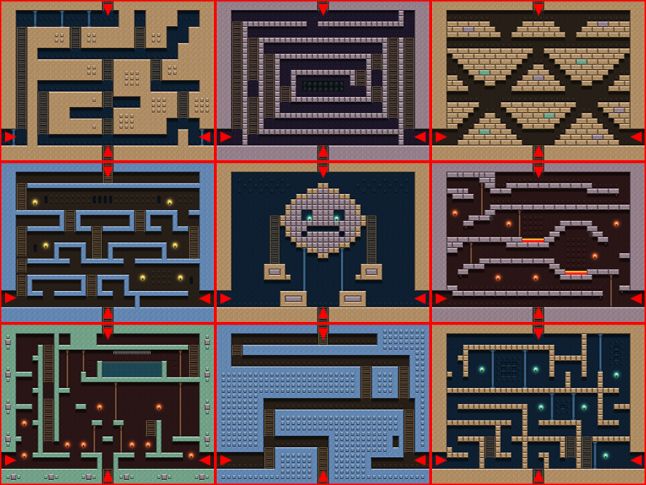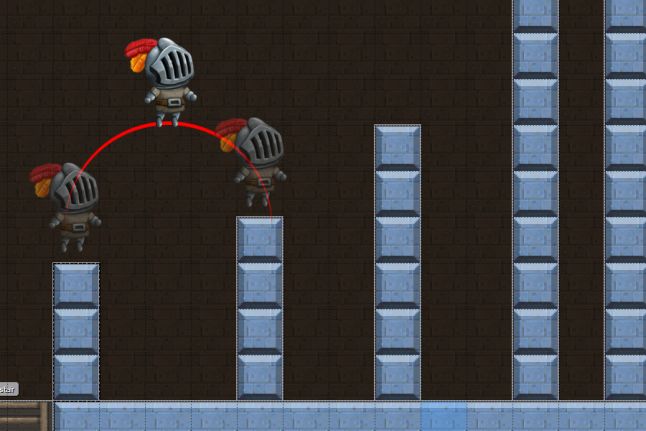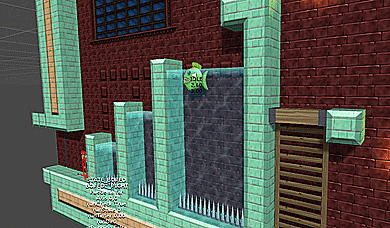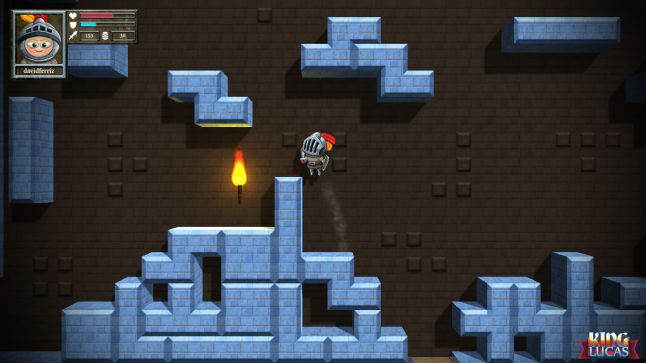Creating a castle with 1000 rooms

1000 rooms is a round number, it is well perceived by ear, and therefore, when we launched the Greenlight campaign, the press wrote articles with headlines such as “A game of 1000 levels!” 1000 rooms are a great number for advertising, but in fact it is inaccurate . The castle of King Lucas consists of a larger number of rooms, namely 1223.
In previous posts about King Lucas, I told you that we abandoned procedural level creation. Therefore, together with my partner Laura Suárez (Laura Suárez), I had to create them one by one, drawing each individual tile, setting up each jump and putting in danger so that the player could find them in the right places. Developing such a number of rooms may seem like a tough task (but it is), but thanks to this work we can feel the player’s feelings in each of the rooms in order to create a sufficient number of details, references, tense and relaxed moments that the algorithm could not calculate procedurally.
Set the rules
Although the level design is not procedural, the placement of rooms inside the grid of the castle was (almost) random. Therefore, after they were created, we needed to establish several rules in order to arrange them correctly:
')
- They are all the same size (40 x 30 tiles).
- Each has 4 doors for entry and exit.
- When a player enters a room, he must be able to reach at least one of the other doors.

In addition to the rules for connecting rooms, we had to take into account the hero’s speed, as well as the height and length of his jumps, because in any platformer it is very important for the player to feel that each tile makes sense (Super Mario games are a good example of this). Therefore, we developed several prototypes and tested them with users, until we found the ideal speed and jumps for optimal control of the character (3 tiles in height and 4 tiles in length).
We know that the movement parameters of the character are far from the crazy canons set by other platformers (which allow the player to move faster, make double and triple jumps, and even push off from the walls). But it was a completely deliberate decision, because we always wanted to make the movements of the character as close as possible to the eight-bit classics.

Instruments
Doing the development task of more than 1000 rooms was difficult. Therefore, we needed a tool to create them as easily as possible, as well as collect them from tiles, so that the game does not weigh several gigabytes (and loaded very quickly). Taking into account these factors, we chose Tiled ( Tiled Map Editor ), a free tool perfectly suited for the design of 2D levels. Thanks to Tiled, we were able to create levels at a rate of 5-10 rooms per day and spent 5 months of a full day working out all the rooms .
Although the game was supposed to be fully 2D, when we experimented with Unity features, we decided to stretch the tiles of the platforms, giving them depth and getting the 2.5D style. This, as well as dynamic lighting, gave a more modern look to the graphics of the game.
Puzzle pieces
The elements used to create the rooms of the castle are entirely inspired by the eight-bit classics. As you can guess, they include lava pits, spikes, ladders, moving platforms, water, barrels, secret passages, enemies and NPCs.
When Laura and I started developing rooms, programmers could not work on this game all day (they created several promotional games for third-party clients). Therefore, most of these elements have not yet been created, and we could not use them in the rooms. During the first weeks, we created about 100 rooms with only spikes and stairs. It's pretty boring, but we mastered Tiled quite well. In addition, these peaceful rooms added moments of relaxation to the narrative of the game. Programmers gradually implemented the rest of the game elements, and with the release of each new we squeezed the maximum out of it. So sometimes you can meet rooms full of slugs or spiders. Probably, it happened because they were new elements in the week of the development of this level, and we could not wait to use them! That's all!
The developers completed all the elements when we had about 700 rooms, so we had time to create hundreds more rooms with a more balanced number of different elements and thus obtain a more uniform lock.

sources of inspiration
Creating levels is interesting. This can be proved by the fact that many people even pay for it in games such as Little Big Planet or Mario Maker . But the truth is that when you spend 8 hours a day on this, it’s very easy to exhaust ideas. Therefore, we found inspiration in our lives. One can notice in the rooms of the King Lucas castle, for example, the moment when we celebrated the day of the creation of the 700th room, the expression of affection for my partner Laura, a lot of hidden messages, Christmas trees or even a castle from my town (Vilény) where I usually walk with my dog Willy (who also became a character in the game).

When it all comes together
As I said in other posts, the main source of income for DevilishGames is advertising games that we do in our advertising agency Spherical Pixel. Indie projects such as King Lucas become side tasks for team members who are not working on other more urgent projects.
Usually the development team is more busy than the art director. In a certain sense, this fact influenced the development of King Lucas, because for a long time we had to develop and test rooms without being able to visualize the whole castle, the whole game. This may seem incredible, but in almost four years of development we were able to test the full beta version only four or five months ago. Then we managed to make sure that the rooms magically combined exactly the way we imagined (and even better). There is no doubt that this testing was a turning point that changed the strategy of our company. Now we will invest more in King Lucas, and not in the search for external customers, as we used to do. We were right, or were wrong, only time will tell and players on Steam!

Source: https://habr.com/ru/post/315842/
All Articles